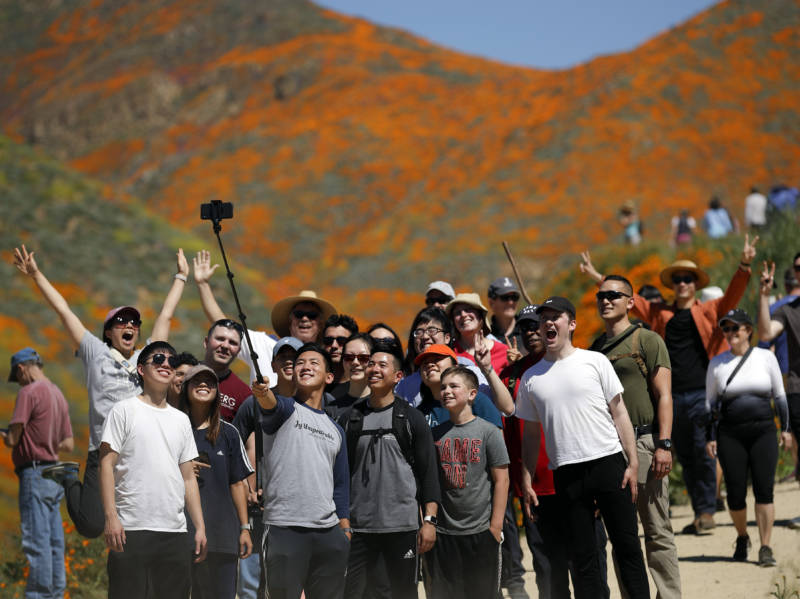As the barren California desert sprang to life, they descended. With their selfie sticks, their smartphones and their gee-whiz-look-at-all-the-flowers smiles, they seemed blissfully unconcerned that they were causing something close to a panic at the highest levels of local government.
Roads backed up for miles. Parking spaces were gone. Wait times for the city’s shuttle service were measured in hours. To help cope with the surge of traffic, the city of Lake Elsinore brought in all available staff, asked county agencies for help, reached out to the California Highway Patrol. On Facebook, the city pleaded with visitors to stay away: “Our City is not made for Disneyland size crowds.”
The cause of all this consternation? Poppies. Specifically, a super bloom, often seen after a particularly wet winter. Super blooms happen about once a decade in the region, but this bloom was different. “This is something unlike anything we have ever experienced in our City and may never again,” the city wrote.
The super bloom of 2019 goes by many names. Mayor Steve Manos has alternatively dubbed it “Poppypalooza” and the “poppy apocalypse.” By Saturday night, Manos had estimated 50,000 visitors had come to the city, population 60,000, about a 90-minute drive from either Los Angeles or San Diego.
Most tourists gathered in Walker Canyon, which offered the most glorious sights of poppies on rolling hillsides. By the end of the weekend, Lake Elsinore had been tromped through by as many as 150,000 people. “Interstate 15 was a parking lot,” The Associate Press wrote. “People fainted in the heat; a dog romping through the fields was bitten by a rattlesnake.”

9(MDAxOTAwOTE4MDEyMTkxMDAzNjczZDljZA004))
